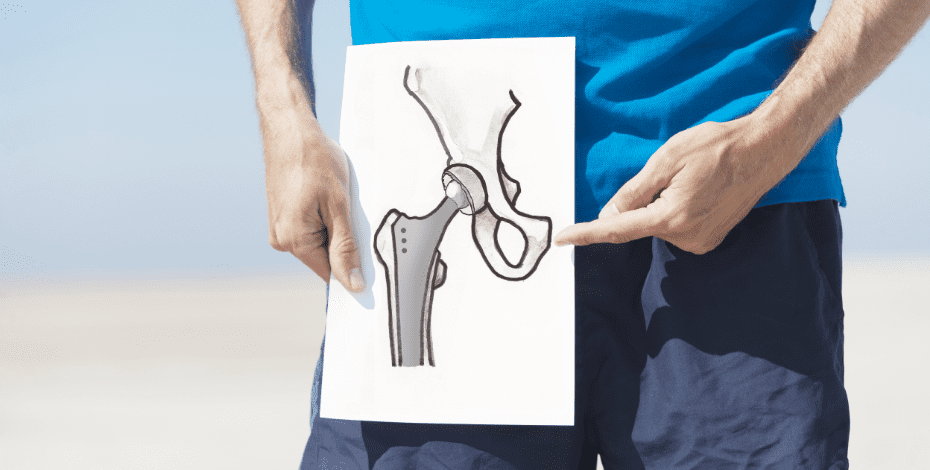
Complex regional pain syndrome: allodynia, fear avoidance and neglect-like symptoms

Anne Daly outlines a complicated presentation of complex regional pain syndrome following a work injury.
This case study will present the complex case of Mr A, a 47-year-old man injured at work and referred for management of lower limb complex regional pain syndrome (CRPS), almost six months after his original injury.
On examination, Mr A met the Budapest criteria for CRPS and presented with severe allodynia throughout his foot, as well as significant fear avoidance behaviour and neglect-like symptoms. These features will be briefly discussed before Mr A’s case is presented.
Complex regional pain syndrome (CRPS) is a painful, disabling and distressing condition that affects the upper and lower limb (Baron 2005). In adults, it usually follows trauma to the limb, such as a fracture, surgery or a penetrating injury, and is difficult to treat, particularly in its chronic form (Harden 2010).
Specific diagnostic criteria have been developed and refined over several decades since the term CRPS was introduced in 1994, replacing previous names for similar conditions such as reflex sympathetic dystrophy and causalgia (Harden 2001).
The effects of CRPS can range from mild to severe and last from months to years (de Mos et al 2007). The strongest risk factor for developing CRPS is immobilisation of a limb (Marinus et al 2011).
Factors identified with a poor prognosis include crush injuries, female gender, a cold limb and the presence of certain genetic phenotypes, although the latter is currently a research tool only (Marinus et al 2011). Pathophysiology remains intriguing, with several mechanisms implicated.
Allodynia
Allodynia is defined as ‘pain from a stimulus that does not normally provoke pain’ (Merskey & Bogduk 1994) and is arguably one of the most unpleasant and disturbing aspects of any pain experience. In the foot, this could occur from the touch of water, light bed clothes, even air movement from a fan.
It is one of the classic ‘positive signs’ of neuropathic pain and is classified as either mechanical dynamic (triggered by stroking the skin) or mechanical static allodynia (triggered by applying gentle static pressure) (Sommer 2016).
Evidence-based treatment of allodynia includes medications, anaesthetic interventions or implanted neuromodulation devices (Koh et al 2014). Physical methods of desensitisation, such as brushing the skin with different textures, are commonly recommended (Goebel et al 2018, Goebel et al 2019, Oerlemans et al 2000): however, there is insufficient evidence to support their use (Daly & Bialocerkowski 2009).
Fear avoidance behaviour
Avoidance can be useful in the early stages of recovery from an injury as it allows an individual to avoid negatively stressing an injury and therefore promotes optimal healing (Ushida 2016). However, if prolonged, avoidance can become harmful, resulting in hypervigilance and disability and a ‘vicious cycle’ that promotes the ongoing experience of pain, despite tissue healing, often resulting in further fear and disability.
Treatment of fear avoidance behaviour involves exposing the person to a graded hierarchy of feared activities and stimuli in order to assist the person to return to full functioning (Moore 2015).
Neglect-like behaviour
Two forms of ‘neglect-like behaviour’ have been described in people with CRPS.
Cognitive neglect occurs when the person feels that the body part does not belong to them and they desire to be rid of it, sometimes voiced as a wish to have the limb amputated.
Motor neglect is present when the person struggles to perform voluntary movement and requires focused mental and visual attention to achieve a movement, often voiced as having forgotten how to move the limb. In extreme cases people with cognitive neglect in CRPS have been known to attempt self-amputation (Goebel et al 2018, Lewis et al 2007). Motor neglect appears to be more common and can be addressed through guided practice of tasks, visual and verbal reinforcement, and programs such as graded motor imagery and mirror imagery (Moseley 2015), although the evidence base for these interventions is incomplete.
Case presentation
Mr A, a 47-year-old full-time excavator, had a 300kg metal beam fall to the ground and onto his right foot, causing a crush injury (fractures to lateral three proximal phalanges and first distal phalanx). Acute management was as follows:
- K-wire internal fixation and amputation of the tips of the lateral three toes
- partial weight-bearing on axillary crutches
- wires in situ for three months
- open-toed orthotic shoe and walking stick.
Mr A was referred by a physician from a medical interventional pain group for physical management of ‘CRPS’. The physician had offered him several interventional procedures, including neuromodulation, which Mr A declined because he was ‘sh.. scared’ of these options. Prior to the current referral, Mr A had not undergone any form of treatment, other than medications prescribed by his GP:
- oxycodone with naloxone (10mg/5mg x 2 per day),
- oxycodone (5–10mg as required),
- pregabalin (75mg x 2 per day).
Patient-reported outcomes measures
Prior to treatment, Mr A completed four patient-reported outcomes measures (PROMs), chosen for their strong psychometric properties including validity, reliability and responsiveness when used with people with persistent pain states.
Their clinical utility includes their ease of use for both respondent and clinician and the inclusion of domains that capture appropriate treatment targets, such as self-efficacy and catastrophising (Goebel et al 2019).
Subjective examination
Mr A lives with his wife and son, aged 24. Mr A’s wife has disabling neurosarcoidosis involving her eyes, shoulders and lungs, rendering her unable to work or drive. Mr A reported significant stress over his inability to drive and to earn a living. The salient points from the subjective examination included:
- worse pain after the removal of the wires (Budapest criteria 1)
- ‘heavy burning’ throughout the right foot, with stabbing sensations under the foot (Budapest criteria 2)
- extremely unpleasant feelings with movement of or touch to his foot (Budapest criteria 2)
- difficulty getting to sleep and staying asleep
- wearing a cone-shaped surgical dog collar around his foot to prevent bedclothes touching it (Budapest criteria 2)
- medications reduced his pain but made him nauseous, coinciding with weight loss from 96kg to 67kg since the injury. His body mass index was now in the upper range of ‘underweight’
- aggravating factors included water trickling on his foot, sitting in the sun, putting weight through his foot and any movement of his foot and ankle (Budapest criteria 2).
Mr A stated that the injury had ‘killed his life’. He reported that his employer said he could not return to work until he was ‘drug free’ and able to wear steel-capped boots.
When questioned about his understanding of his pain, Mr A commented that he ‘didn’t know anything about what was happening’. The PROMs were mostly congruent with his presentation, but Mr A was at times garrulous and had difficulty completing a line of thought, his affect was somewhat incongruous as he appeared almost euphoric at times.
Physical examination
The salient points from the physical examination were:
- mechanical static allodynia over both sides of the foot and toes (Budapest criteria 1, 2)
- rapid withdrawal of the limb from the stimulus and complaints of extreme pain, which lasted several minutes (Budapest criteria 1, 2) (dynamic allodynia was not tested due to this response)
- a cold, darkish hued, dry right foot (Budapest criteria 3)
- disfigured toenails (Budapest criteria 3)
- decreased hair growth (Budapest criteria 3)
- unable to move his toes or foot; he said that it just wouldn’t move and he did not know how to move it (Budapest criteria 3) (manual muscle testing was not attempted)
- no sign of dystonia or tremor
- single point walking stick held on the right (affected) side
- weight born heavily through the stick and the right heel
- unable to weight bear on his right leg when the stick was changed to the left hand
- unable to weight bear through the ball of the foot due to pain and fear.
Laterality testing was conducted using the Recognise™ Graded Motor Imagery (GMI) app (NOIgroup 2017). Mr A was naive to this testing. Three trials were undertaken which revealed that Mr A did not demonstrate differences in accuracy or speed of recognising left and right feet and nor were his responses outside of normal responses (Moseley et al 2012).
On a second visit the presence of dynamic brush allodynia (Budapest criteria 3) was confirmed and then sensation was further tested with a 2.83 (0.07g) von Frey hair.
Mr A was not able to see his foot during testing, nor was he able to feel the von Frey hair when tested on his hand, arm or left foot. When the hair was touched against his right foot, not only did he experience severe pain, but he was able to localise the stimulus to the exact point where testing had occurred (Budapest criteria 2, 3).
Due to his pain experience, further testing was not carried out.
In summary, accepting that there was no other condition that better explained his presentation (Budapest criteria 4), Mr A met the Budapest criteria for CRPS. He was unable or unwilling to move the foot, to weight bear through it and to tolerate any form of sensory stimulation over it.
The hypotheses being tested against each other were that Mr A’s presentation was due to:
- severe allodynia—supported by the von Frey hair test and the temporal summation
- fear avoidance behavior—supported by his refusal to move his foot and his avoidance of contact with healthcare professionals
- neglect-like symptoms—supported by the feeling that his foot did not belong to him, but less likely given the normal response on GMI testing.
It was reasonable to conclude that allodynia was the predominant problem, followed (and probably contributed to) by fear avoidance behaviour. Neglect-like symptoms was the weakest hypothesis, although it seemed inevitable that with disuse, Mr A had developed impaired motor control that may have contributed to his sense of not knowing how to move his foot.
The flags model
The flags model is a methodology for recognising risk factors and social and environmental factors for ongoing disability (Main et al 2008). Mr A’s presentation can be summarised using this model and used along with other information from the subjective and physical examination to set collaborative goals with him (Nicholas et al 2011).
Goals and rationale of management
Taking into consideration Mr A’s complicated presentation, the following goals were set:
- Reduce fear and reluctance to engage with the right lower limb by providing Mr A with an explanation of his symptoms appropriate for his level of health literacy and psychological status about CRPS, its causation, natural course, signs and symptoms, typical outcomes and treatment options (Goebel et al 2019) and giving him the opportunity to ask questions during and after the explanation. Reducing the threat value of pain and confronting thoughts that pain may create further ‘damage’ could reduce fear avoidance behaviour and reassure Mr A that provoking the allodynia is not something to be avoided at all costs (Vlaeyen & Linton 2000).
- Achieve functional outcomes with Mr A which result in him moving and touching his foot, fully weight bearing and engaging in rehabilitation (Goebel et al 2019). Graded exposure will be utilised where less fearful activities are undertaken first, with regular addition of more fearful activities (Vlaeyen et al 2012). This may or may not assist in differentiating between the possible causes of Mr A’s avoidant behaviour (allodynia, fear, neglect). However, this treatment is appropriate in all three cases.
- Ensure that Mr A is receiving appropriate holistic medical, psychiatric and psychological management (including his weight loss, rib fractures and mental health difficulties as well as his pain condition) by:
- communicating in writing and in person with his current healthcare clinicians and case manager
- escalating a referral to an interdisciplinary psychologically informed rehabilitative pain management program, if sufficient progress is not achieved in eight weeks (Goebel et al 2019).
Outcomes of management
Over eight weeks Mr A participated in three face-to-face sessions, three phone discussions and one return-to-work conference. As part of his management he was sent a letter summarising the assessment and management plan and an information sheet written by the author to assist in his understanding of his condition.
Outcomes were as follows:
- minor changes occurred in his PROMs; these were less than the minimum clinically important difference (the smallest change in an outcome measure score that an individual would perceive as important)
- he was able to walk greater distances (unable to quantify) and increased the amount of weight through his foot after being taught to use forearm crutches. Using a set of scales to measure how much weight he could bear through a flat foot increased from 3kg to 12kg, sustained for a few seconds only
- small movements of his toes and his ankle by the third visit.
Mr A remained severely disabled and distressed and a referral to an interdisciplinary pain team was expedited.
Discussion
Reflecting the most recent clinical guidelines for CRPS (Goebel et al 2019), the author’s management of Mr A consisted of:
- education and reassurance
- early functional restoration via incremental weight bearing and movement
- referral to an interdisciplinary pain service.
Mr A’s presentation was marked by severe pain elicited by minimal stimuli, withdrawal movements and strong expressions of pain. It was therefore important that the physical examination was as painless as possible and allowed him control over the stimulus (involving small gradations of weight bearing and movement that he could achieve himself). This approach is believed to have facilitated his ability to decrease hypervigilance and attend to and retain the education and reassurance he was being provided.
His complex presentation, including the presence of red and orange flags, raised issues of safety and the need for expert care. Referral to an interdisciplinary pain service was indicated if progress did not occur within eight weeks (Goebel et al 2019).
Mr A’s prognosis is poor, as evidenced in the number of psychosocial flags present (Nicholas et al 2011) as well as the biological prognostic indicators (Marinus et al 2011) including the crush injury and the cold limb (Marinus et al 2011).
Studies into the Victorian workers’ compensation scheme have demonstrated that if a worker has been off work for more than three months, the chance they will ever return to any work is less than 33 per cent (Johnson & Fry 2002). For Mr A, this would seem to be an unfortunate but likely outcome.
Mr A may also be experiencing a trauma reaction related to the mechanism of his injury.
It has been recognised that workers have worse health outcomes than those with the same injuries treated outside of a compensation system (RACP 2001). Mr A’s management may have been more effective if he did not have a compensable injury, and as a public patient was immediately referred to a tertiary public pain service, where there are protocols in place to expedite acute CRPS management, rather than being referred into single discipline healthcare.
Unfortunately, Mr A’s avoidant behaviour did not appear to be recognised by his medical practitioners. Ultimately this resulted in a delay in Mr A receiving appropriate management.
Conclusion
Mr A’s presentation was too complex to be managed in single-discipline healthcare. Mr A received an explanation of his symptoms and the potential reasons for them from the author, which then allowed him to engage in treatment for the first time since his injury. This required clear communication between the author and Mr A, as well as with other stakeholders.
Recognition of the biopsychosocial complexity of his presentation and referral for intensive interdisciplinary treatment created the optimal opportunity for Mr A to achieve a functional outcome following his injury.
>> Email inmotion@australian.physio for references.
Mr A consented to his case being utilised by the author.
Dr Anne Daly, APAM, MACP, is a registrar undertaking Fellowship of the Australian College of Physiotherapists by Clinical Specialisation in the pain discipline. Anne is CoDirector of The PainCare Collective, a consultant to the Victorian Workcover Authority and the Transport Accident Commission and joined the postgraduate teaching staff at La Trobe University in 2020.
© Copyright 2024 by Australian Physiotherapy Association. All rights reserved.





